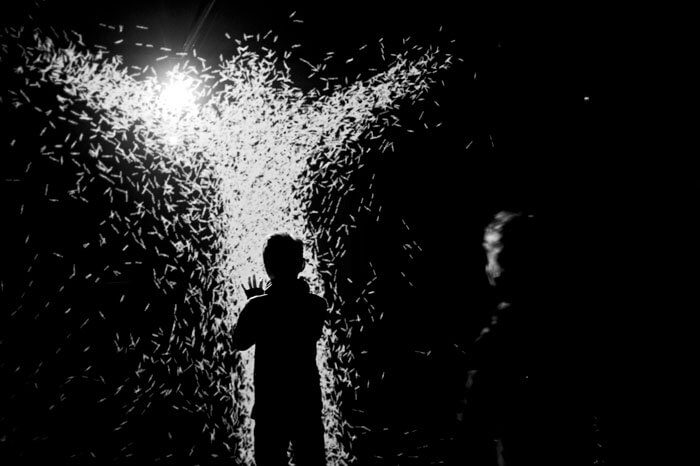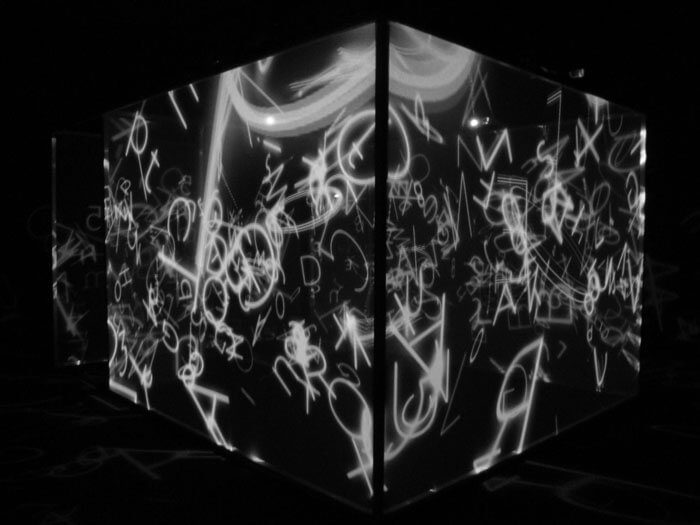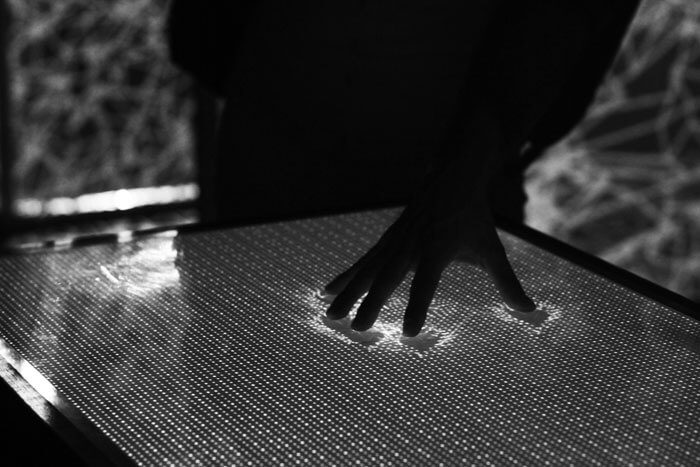
ARTECHOUSE, Albuquerque
May 4 – October 21, 2018
Can we materialize time? Does light have roots? Can we see something when there is nothing?
French artists Claire Bardainne and Adrien Mondot pose these and other provocative questions in XYZT: Abstract Landscapes, installed at ARTECHOUSE in the Sawmill District of Albuquerque through October 21. Described as “a first-of-its-kind innovative art space,” ARTECHOUSE, with an additional location in Washington, D.C., showcases experiential and immersive large-scale installations by today’s avant-garde tech artists.
Mondot, a multidisciplinary artist, computer scientist, and juggler and Bardainne, a visual artist with a background in graphic design and scenography, work with a team of collaborators to create informational technology, using visual elements to focus on the body, movement, and human experience.
XYZT is comprised of ten installations designed to physically engage “visitors” (decidedly not viewers), using four letters in mathematical language—X (horizontality), Y (verticality), Z (depth), and T (time)—as access points that are responsive to visitors to create images in real time. For example, snake-like images of interlocked letters shake, rattle, and float inside a glass aquarium if a visitor “breathes life” into them via a small sensor.

Visitors make their way through a large black curtain and into a short hallway, the floor of which is seemingly liquified by one’s footsteps due to sensors and projectors mounted overhead. The hallway opens up to a vast, dark gallery space compartmentalized by large scrims, which act as projection surfaces. Informational terminals with small digital screens and headphones are placed discreetly near each installation to provide a concise overview of the work, poetically restricting explanations to the principles and natural phenomena at play. For example, “the way that objects move is the signature of their materiality.”
There is no direct lighting in the room other than that from the projectors, which use only white light to beam images composed of lines, numbers, and letters; the palette is a cool black, white, and gray. A low, vaguely familiar hum of swarming bees, murmuration of birds, and reptilian rattling fills the space. The overall effect is curiously imaginative and contemplative.
Until recently, art was looked at or listened to. We responded to it, not the other way around—and no combination thereof.
The exhibition includes, among others, the installation Discrete Collisions, a digital vertical screen panel displaying a collection of visually tumbling letters, interrupted or suspended only by a visitor’s hands on the screen. Shifting Clouds questions rules of intelligence—and the individual and social behavior of a group—by allowing a flock of image particles to be manipulated by a visitor’s gestures. Anamorphosis in Time, a crowd pleasing, high-tech “funhouse mirror” projection, morphs one’s body movements into a weightless dance against the backdrop of unchanging static elements.
XYZT questions another phenomenon, perhaps not immediately recognizable: the ways in which artworks act and are acted upon. Until recently, art was looked at or listened to. We responded to it, not the other way around—and no combination thereof. With many contemporary tech-driven artworks, “engagement” and “interactivity” is often achieved through otherwise evolutionarily unproductive movements, such as flailing our arms, waving our hands, or jumping up and down as we try to figure out what to do to make the artwork respond, to do what it is intended to do.
The strengths of XYZT lie in its actively contemplative nature, its intentional tetherings to the body and our lived experience, specifically the effects of natural forces on social behavior. The exhibition leaves a lasting impression, while tapping into our desire for instant gratification, begging the question, “Does art become more powerful if we approach it as something to be triggered?”




